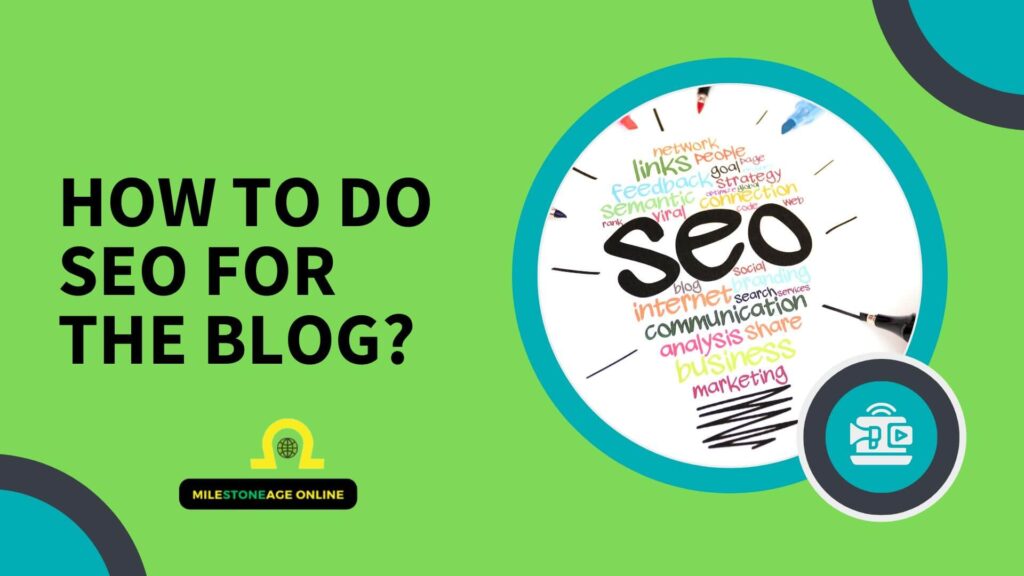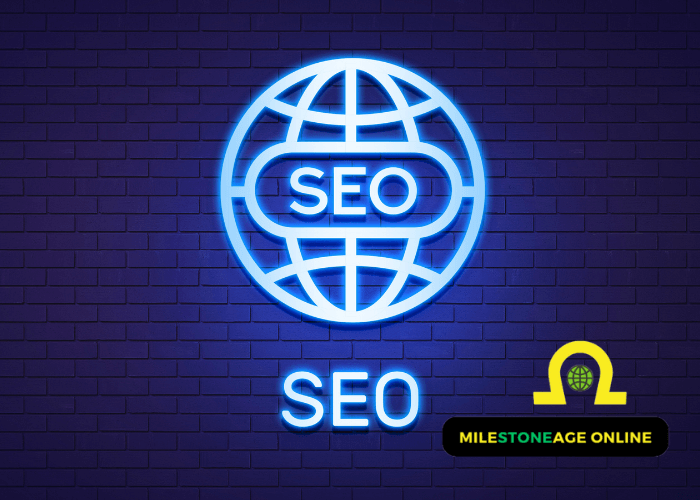In my years of navigating the digital landscape, I’ve uncovered the indispensable benefits of technical SEO for any website. Picture this: it’s the backstage pass to online success.
With meticulous optimization, your site becomes a well-oiled machine, effortlessly impressing search engines.
Lightning-fast loading times, impeccable site structure, and mobile responsiveness become your website’s best friends, boosting user experience.
In this article, we’ll explore the “Benefits of Technical SEO for your Website”. Trust me, harnessing the power of technical SEO is like giving your website a VIP ticket to the top of the digital charts.
1. Improved User Experience
Embarking on the technical SEO journey isn’t just about algorithms; it’s a direct path to an enhanced user experience. Imagine a website that seamlessly loads at the speed of thought, where navigation is intuitive, and content is readily available.
The benefits of Technical SEO for your website aren’t merely a digital makeover; it’s a commitment to crafting a user-friendly haven, where every click is a joyous expedition.
It’s not just about pleasing search engines; it’s about ensuring your visitors revel in a smooth and delightful journey through your digital domain. With technical SEO, user experience isn’t just improved; it’s elevated to a whole new level.
Site Speed:
The velocity at which your website loads holds paramount importance for securing a top-ranking position on both desktop and mobile platforms.
Prioritize optimizing your website’s loading speed to provide an enhanced user experience. Utilize Google’s free tool, Page Speed Insights, to monitor your current website speed.
Here are four strategies to accelerate your site’s loading speed:
- Compress Images: Reduce image file sizes by cleaning up your website’s cache and utilizing free tools like TinyPNG or Smush before uploading images.
- Analyze Load Times with CDN: Evaluate the impact of Content Delivery Networks (CDNs) on your site’s speed using webpagetest.org. Test with the CDN both enabled and disabled to ensure optimal performance.
- Discard 3rd Party Scripts: Boost your website speed by removing unnecessary 3rd party scripts or plugins that may be slowing it down.
- Minify HTML, CSS, and JavaScript Files: Enhance page load time by using tools like the Autotimize plugin to remove unnecessary whitespace or characters from code, minimizing file size.

Mobile Optimization:
Given the prevalence of mobile device usage, Google’s mobile-first indexing emphasizes the importance of mobile optimization. Confirm your website’s mobile responsiveness by checking “Mobile Usability” in Google Search Console.
Take advantage of Google’s “Mobile-Friendly Test Tool” to assess your website’s mobile optimization. The benefits of mobile responsiveness include:
- Easy Navigation: A mobile-friendly website offers a seamless experience with clear layouts, menus, and buttons, encouraging users to stay longer.
- Fast Loading: Quick-loading responsive websites satisfy users and contribute to a lower bounce rate.
- User-Friendly: Mobile compatibility enhances user satisfaction, fostering repeat visits, while non-responsive sites risk lower search engine rankings.
- Enhanced SEO Performance: Google favors mobile-responsive websites, leading to higher rankings on Search Engine Results Pages (SERPs), reduced bounce rates, and expanded user reach.
Security:
In the digital realm, safeguarding your online presence is paramount. Strengthen your website’s defenses through SSL certificates, firewalls, and HTTPS protection to ensure a secure user experience.
- SSL Certificates: Encrypt data transmission for heightened security and user trust.
- Firewalls: Create a protective barrier against unauthorized access and potential threats.
- HTTPS Protection: Secure data exchange between users and your website, bolstering overall security.
Easy Navigation:
Navigating your website should be a breeze for users, fostering a positive experience. Employ a smooth and organized site structure, maintain a consistent URL structure, implement breadcrumb navigation, and ensure intuitive menus for seamless exploration.
- Smooth Site Structure: Organize content logically for easy access and user-friendly navigation.
- Constant URL Structure: Maintain consistency in URLs for clarity and straightforward navigation.
- Breadcrumbs Navigation: Provide users with a clear trail back to the main pages, enhancing navigation.
- Intuitive Menus: Simplify user interaction with easily understandable and well-organized menus.
2. Increased Search Engine Visibility
In the dynamic digital landscape, the key to standing out lies in elevating your website’s visibility on search engines.
The benefits of Technical SEO for your website serve as the beacon guiding your content to the forefront of search results, making your online presence more discoverable.
Harnessing the intricacies of technical optimization is the surefire strategy to propel your website into the spotlight, ensuring that it not only exists but thrives in the competitive realm of search engine rankings.


Crawling and Indexing Optimization:
Unleash the full potential of your website by mastering the art of crawling and indexing. Streamline your digital footprint, tackle broken links, and eliminate duplicate content for search engines to seamlessly explore and index your site.
- Identify Indexing Issues: Pinpoint and resolve challenges with an in-depth analysis of your website’s indexing process.
- Coverage Report in Google Search Console: Leverage the power of Google Search Console’s Coverage Report to track and rectify indexing errors.
- Use an XML Sitemap for Indexing: Guide search engines efficiently through your website by employing a well-structured XML sitemap.
- Optimized robots.txt File: Fine-tune your robots.txt file to control search engine crawlers’ access and enhance indexing precision.
Internal Linking Strategies:
Elevate your website’s structural integrity with effective internal linking strategies. Establish a robust network from the homepage to deep pages, implement the noindex tag strategically, and master the art of canonicalization for optimal crawling and indexing.
- Internal Link from Homepage to Deep Pages: Create a strategic internal link structure, ensuring easy navigation from the homepage to deeper layers of your website.
- Noindex Tag: Employ the noindex tag judiciously to prevent specific content from being indexed, refining search engine results.
- Canonicalization: Master the art of canonicalization to consolidate duplicate content and guide search engines towards the preferred version.
3. Improved Core Web Vitals
Elevating user experience to new heights involves a keen focus on Core Web Vitals, the critical metrics that define a website’s performance in the eyes of both users and search engines.
Enhancing these vital elements not only ensures a seamless and speedy interaction for visitors but also contributes significantly to search engine rankings.
Let’s delve into the intricacies of boosting Core Web Vitals for a digital environment as one of the benefits of technical SEO for your website that not only captivates but leaves a lasting positive impression.


Optimizing Largest Contentful Paint (LCP):
Streamline the loading process by optimizing the largest content element, such as hero images or feature graphics, ensuring a swift and engaging user experience.
This involves minimizing render times and leveraging browser caching to deliver content promptly.
Prioritizing First Input Delay (FID):
Improve user interactivity by prioritizing the reduction of delays between a user’s action and the website’s response.
Optimize JavaScript execution and minimize long tasks to foster a responsive interface, especially crucial for interactive elements like buttons and forms.
Enhancing Cumulative Layout Shift (CLS):
Minimize unexpected layout shifts to create a visually stable environment, preventing user frustration caused by abrupt content displacements.
Properly size images and reserve space for dynamically loaded content to maintain a consistent and predictable layout.
Efficient Resource Loading for LCP:
Ensure efficient loading of resources such as images and scripts, directly impacting the Largest Contentful Paint metric and overall site speed.
Employ lazy loading for non-essential resources, prioritize critical rendering paths, and utilize content delivery networks (CDNs) to optimize resource delivery.
Mobile Responsiveness for Core Web Vitals:
Tailor your website for optimal performance on mobile devices, aligning with the growing trend of mobile-first user interactions and meeting Core Web Vitals criteria across various platforms.
Optimize font sizes, tap targets, and use responsive images to create a seamless experience on smartphones and tablets, contributing to improved LCP and overall user satisfaction.
4. Higher SEO Ranking
In the digital arena, securing a prominent position on search engine results isn’t just a goal; it’s a strategic imperative.
Achieving a higher SEO ranking is the beacon that directs a website toward increased visibility, credibility, and ultimately, success.
Understanding the nuances of search engine optimization unveils the pathway to not just being discovered but celebrated in the competitive landscape of online search results.
Let’s explore the foundational principles and actionable strategies that propel websites to the summit of SEO rankings.


Optimizing On-Page Elements:
Unlocking the true potential of your website begins with finely tuning the on-page elements that speak directly to search engines and users alike.
Dive into the intricacies of keyword optimization, compelling meta descriptions, and engaging content to craft a digital narrative that not only captivates but also secures a prime spot in search engine results.
- Craft compelling meta titles and descriptions for each page.
- Conduct thorough keyword research for strategic integration.
- Ensure header tags (H1, H2, H3) are utilized effectively.
- Optimize image alt text for improved accessibility and SEO.
- Regularly update and enhance content for relevance and freshness.
Fixing Technical Issues (Broken links, Duplicate Content):
Behind the scenes, technical glitches can undermine the performance and ranking of your website. Tackle issues head-on by identifying and rectifying broken links, eliminating duplicate content, and ensuring that your digital domain operates smoothly, both for users and search engine crawlers.
- Conduct regular audits to identify and fix broken links.
- Implement redirects for removed or updated content.
- Eliminate duplicate content through canonicalization.
- Leverage tools like Screaming Frog for comprehensive technical audits.
- Utilize 301 redirects to maintain link equity when restructuring URLs.
Improving Website Architecture (Internal Linking + URL Structure):
The blueprint of your website is crucial to its overall SEO success. Enhance website architecture through strategic internal linking, ensuring a cohesive user journey and a logical URL structure that facilitates both user navigation and search engine understanding.
- Establish a clear and logical hierarchy for your website.
- Implement breadcrumb navigation for user-friendly exploration.
- Utilize descriptive and SEO-friendly URLs.
- Foster internal linking for enhanced content discoverability.
- Regularly update and revise site structure for evolving content needs.
Mobile Optimization:
In an era dominated by mobile users, optimizing your website for mobile devices is not just a consideration—it’s a necessity.
Streamline your site’s responsiveness, speed, and overall mobile experience to cater to the growing demographic of users accessing content on smartphones and tablets.
- Prioritize responsive design for seamless adaptation to various devices.
- Optimize images and media for faster mobile loading.
- Ensure mobile-friendly navigation and tap targets.
- Leverage Google’s Mobile-Friendly Test Tool for Assessments.
- Monitor and enhance user experience on diverse mobile platforms.
5. Lowered Bounce Rate
Reducing bounce rate is not merely a metric; it’s a testament to the engagement and resonance your website holds with its visitors.
A lower bounce rate signifies that users are not just arriving at your site but are intrigued enough to explore further. One of the benefits of technical SEO for your website is a lowered bounce rate that signifies the interest of the user in your content.
Delve into the intricacies of optimizing user experience, content relevance, and site structure to create a digital environment that not only captivates but also retains and converts visitors effectively.


Compelling and Relevant Content:
Craft content that not only meets the expectations set by your headlines and meta descriptions but goes beyond, providing valuable and engaging information.
Ensure that your content addresses user queries comprehensively, leaving no room for immediate disinterest.
Streamlined Website Navigation:
Optimize your website’s navigation to be intuitive and user-friendly. Clear menus, logical site structures, and strategically placed calls-to-action guide visitors seamlessly through your content, reducing the likelihood of premature exits.
Faster Page Loading Times:
Users are impatient, and a slow-loading website can drive them away. Enhance page loading times by compressing images, leveraging browser caching, and optimizing scripts to create a smoother and more immediate user experience.
Mobile Responsiveness:
In an era dominated by mobile users, ensuring your website is responsive across various devices is paramount. A mobile-friendly design eliminates frustration, creating an environment where users can easily navigate and explore your content.
Strategic Internal Linking:
Utilize internal linking strategically to encourage users to explore additional pages on your site. Relevant and contextual links guide visitors to related content, reducing the likelihood of them bouncing off after viewing a single page.
By addressing these aspects comprehensively, you not only capture the attention of your audience but also create an immersive online experience that encourages prolonged interaction and a lowered bounce rate.
6. Increased Website Traffic
Amidst the vast digital landscape, the heartbeat of online success lies in the steady influx of website traffic. Drawing visitors to your digital domain is not just a pursuit but a strategic imperative for achieving visibility, engagement, and conversion.
Explore the realms of effective digital marketing, search engine optimization, and user-centric content to unlock the pathways that lead to a substantial increase in website traffic.
Let’s embark on a journey to amplify your online presence and ensure your website becomes a bustling destination in the vast online expanse.


Improving Search Engine Rankings:
Aspiring to the summit of search engine results requires a strategic blend of optimization techniques. Dive into the intricacies of enhancing your website’s search engine rankings by mastering key elements that captivate both users and algorithms.
- Quality Content Creation: Craft compelling and valuable content that resonates with your audience, meeting their needs and surpassing search engine expectations.
- Technical SEO Mastery: Tackle technical intricacies such as site speed, mobile responsiveness, and structured data to create a website that search engines love to crawl and index.
- Link Building Strategies: Build a robust network of high-quality backlinks to signal to search engines the authority and relevance of your content.
- User Experience Enhancement: Prioritize user experience by optimizing site navigation, minimizing bounce rates, and ensuring seamless interactions, signaling value to search algorithms.
- Social Signals Integration: Leverage social media platforms to amplify your content, driving engagement and signaling relevance to search engines.
Optimizing for Target Keywords:
Navigating the digital landscape successfully involves a strategic focus on keywords. Optimize your website for target keywords to align with user intent and ensure your content stands out in search engine results.
- Keyword Research Excellence: Conduct thorough keyword research to identify high-impact, relevant keywords for your content.
- Strategic Keyword Placement: Integrate target keywords seamlessly into titles, meta descriptions, and content to enhance search engine visibility.
- Long-Tail Keyword Embrace: Leverage long-tail keywords to capture niche audiences and improve the specificity of your content.
- Regular Keyword Audits: Stay abreast of evolving trends by conducting regular keyword audits and adapting your content strategy accordingly.
- Competitor Analysis: Analyze competitor keyword strategies to identify opportunities and refine your keyword optimization approach.
Increasing Click-Through Rates:
Elevating click-through rates involves a meticulous blend of enticing snippets, compelling calls-to-action, and strategic positioning.
Delve into the art of crafting captivating content that not only attracts attention but also compels users to click through.
- Compelling Meta Descriptions: Craft meta descriptions that spark curiosity and succinctly communicate the value of your content.
- Enticing Title Tags: Create title tags that are both keyword-rich and compelling, encouraging users to click through.
- Schema Markup Implementation: Enhance search results with schema markup to provide additional information and entice users to click.
- A/B Testing Strategies: Experiment with different titles, meta descriptions, and featured snippets through A/B testing to refine your click-through optimization.
- Content Relevance and Freshness: Regularly update and refresh content to maintain relevance and encourage users to click on the latest information.
Improving Mobile Optimization:
In an era dominated by mobile users, optimizing for mobile is not a choice but a necessity. Explore the essentials of creating a seamless and engaging mobile experience for your audience.
- Responsive Design Adoption: Prioritize responsive design to ensure your website adapts seamlessly to various mobile devices.
- Mobile-First Indexing Compliance: Align your website with Google’s mobile-first indexing guidelines for improved search engine visibility.
- Page Speed Optimization: Streamline mobile page loading times by compressing images, optimizing code, and leveraging browser caching.
- User-Friendly Mobile Navigation: Simplify navigation on mobile devices, ensuring users can easily access and explore your content.
- Mobile-Specific SEO Strategies: Implement mobile-specific SEO strategies, such as optimizing for local search and leveraging mobile-friendly structured data, to enhance mobile search performance.
Wrap Up
In my digital journey, I’ve witnessed the transformative power and benefits of technical SEO for your website—it’s the unsung hero that propels your website to new heights.
From lightning-fast loading times to impeccable site structures, each optimization trickles down to create a seamless user experience.
As someone who has navigated the ever-evolving digital landscape, I can attest: that technical SEO isn’t just a tool; it’s a digital compass pointing your site towards success.
The meticulous attention to detail, from sitemaps to mobile responsiveness, isn’t just for search engines; it’s a nod to your audience, saying, “Your experience matters.”
In the realm of online presence, technical SEO isn’t an option; it’s the cornerstone of a thriving and visible website. Trust me, invest in technical SEO, and watch your digital terrain flourish.








